-
Carbon Law, modeled after Moore’s Law, a pathway to halve emissions every decade

Moore’s Law states that computer processors double in power about every two years. While it is neither a natural nor legal law, this simple rule of thumb or heuristic has been described as a golden rule which has held for fifty years and still drives disruptive innovation. Research say that a carbon roadmap, driven by a simple rule of thumb, or Carbon Law, of halving emissions every decade, could catalyze disruptive innovation. Following a Carbon Law, which is based on published energy scenarios, would give the world a 75 percent chance of keeping Earth below 2°C above pre-industrial temperatures, the target agreed by nations in Paris in 2015.
-
-
Have humans transformed geological processes to create a new epoch -- the Anthropocene?
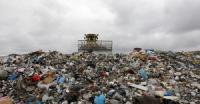
The Anthropocene — the concept that humans have so transformed geological processes at the Earth’s surface that we are living in a new epoch — was formulated by Nobel Laureate Paul Crutzen in 2000. It has since spread around not just the world of science, but also across the humanities and through the media into public consciousness. An international group of scientists – the Anthropocene Working Group – is now analyzing the Anthropocene as a potential new addition to the Geological Time Scale, which would be a major step in its global scientific recognition. These scientists argue that “irreversible” changes to the Earth provide striking evidence of new epoch.
-
-
Foreign graduate students, postdocs consider leaving the U.S.

On 6 March, President Donald Trump signed a second executive order to suspend immigration from six predominately Muslim countries, this time excluding Iraq from the list. According to an article in Chemical & Engineering News (C&EN), the weekly newsmagazine of the American Chemical Society, the move has prompted foreign graduate students and postdoctoral researchers currently in the United States to start looking elsewhere for educational, training and job opportunities.
-
-
Climate breaks multiple records in 2016, with global impacts
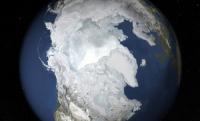
The year 2016 made history, with a record global temperature, exceptionally low sea ice, and unabated sea level rise, and ocean heat, according to the World Meteorological Organization (WMO). Extreme weather and climate conditions have continued into 2017. WMO Secretary-General Petteri Taalas said that the increased power of computing tools and the availability of long term climate data have made it possible today, through attribution studies, to demonstrate clearly the existence of links between man-made climate change and many cases of high impact extreme events in particular heatwaves.
-
-
Evaluating critical mineral-resource potential in Alaska
A new method for evaluating the resource potential for large, underexplored regions for critical minerals in Alaska is now available online. Critical minerals are used in products that are vital to national security, technology, and also play an integral role in our everyday modern life.
-
-
The challenge of sustainable mineral supply
An international team of researchers says global resource governance and sharing of geoscience data is needed to address challenges facing future mineral supply. Specifically of concern are a range of technology minerals, which are an essential ingredient in everything from laptops and cell phones to hybrid or electric cars to solar panels and copper wiring for homes. However, base metals like copper are also a matter of immense concern.
-
-
As the world ends, people remain calm and prosocial: Video-game study

As the world ends, will you lock arms and sing “Kumbayah” or embark on a path of law-breaking, anti-social behavior? A new study, based upon the virtual actions of more than 80,000 players of the role-playing video game ArcheAge, suggests you will be singing. “We realize that, because this is a video game, the true consequences of the world ending are purely virtual. That being said, our dataset represents about as close as we can get to an actual end-of-the-world scenario,” says one researcher.
-
-
Nextgen robots for nuclear clean-up
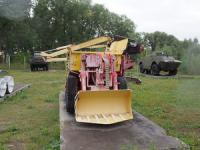
The cost of cleaning up the U.K.’s existing nuclear facilities has been estimated to be between £95 billion, and £219 billion over the next 120 years or so. The harsh conditions within these facilities means that human access is highly restricted and much of the work will need to be completed by robots. Present robotics technology is simply not capable of completing many of the tasks that will be required. A research a consortium to build the next generation of robots that are more durable and perceptive for use in nuclear sites.
-
-
Extreme sea levels could endanger European coastal communities
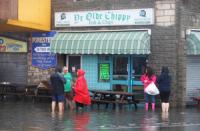
Massive coastal flooding in northern Europe that now occurs once every century could happen every year if greenhouse gas emissions continue to rise, according to a new study. New projections considering changes in sea level rise, tides, waves and storm surge over the twenty-first century find global warming could cause extreme sea levels to increase significantly along Europe’s coasts by 2100. Extreme sea levels are the maximum levels of the sea that occur during a major storm and produce massive flooding.
-
-
Examining susceptibility to cyberattacks through brain activity, eye gaze
New research examines internet users’ susceptibility and ability to detect cybercriminal attacks by analyzing a user’s brain activity and eye gaze while they are performing security related tasks. “Keeping computer systems and networks secure often relies upon the decisions and actions of those using the system,” one researcher says. “Therefore, it is vital to understand users’ performance and behavior when an attack such as phishing or malware occurs. The analysis of neural activations depicts the users’ decision-making capacities, attention and comprehension of the security tasks.”
-
-
Louisiana wetlands threatened by with sea-level rise four times the global average
Without major efforts to rebuild Louisiana’s wetlands, particularly in the westernmost part of the state, there is little chance that the coast will be able to withstand the accelerating rate of sea-level rise, a new study concludes. The study shows that the rate of sea-level rise in the region over the past six to ten years amounts to half an inch per year on average.
-
-
Map shows seawater threat to California Central Coast aquifers
More than half the world’s population lives within 37 miles (60 kilometers) of the coast, and three-quarters of all large cities are located in coastal areas. Many coastal communities rely on groundwater to satisfy their drinking and farming water needs. But removing too much of that groundwater can change the fluid pressure of underground aquifers, drawing seawater into coastal aquifers and corrupting water supplies. Saltwater intrusion is often irreversible. Researchers have transformed pulses of electrical current sent 1,000 feet underground into a picture of where seawater has infiltrated freshwater aquifers along the Monterey Bay coastline.
-
-
Detecting weapons-grade uranium from afar
It is hard enough to identify nuclear materials when you can directly scan a suspicious suitcase or shipping container. But if you cannot get close? A technique for detecting enriched uranium with lasers could help regulators sniff out illicit nuclear activities from as far as a couple of miles away.
-
-
Reusable sponge could revolutionize oil spill and diesel cleanup
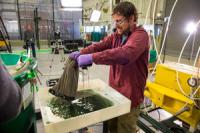
When the Deepwater Horizon drilling pipe blew out seven years ago, beginning the worst oil spill in U.S. history, those in charge of the recovery discovered a new wrinkle: the millions of gallons of oil bubbling from the sea floor weren’t all collecting on the surface where it could be skimmed or burned. Some of it was forming a plume and drifting through the ocean under the surface. Now, scientists have invented a new foam, called Oleo Sponge, that addresses this problem.
-
-
Purifying wastewater with sunlight
Chemists have found a way to use sunlight to purify wastewater rapidly and cheaply, and to make self-cleaning materials for buildings. The technology uses modified titanium dioxide as a photocatalyst that works with sunlight, unlike other leading water purification products on the market that need ultraviolet light.
-
More headlines
The long view
New Technology is Keeping the Skies Safe
DHS S&T Baggage, Cargo, and People Screening (BCP) Program develops state-of-the-art screening solutions to help secure airspace, communities, and borders
Factories First: Winning the Drone War Before It Starts
Wars are won by factories before they are won on the battlefield,Martin C. Feldmann writes, noting that the United States lacks the manufacturing depth for the coming drone age. Rectifying this situation “will take far more than procurement tweaks,” Feldmann writes. “It demands a national-level, wartime-scale industrial mobilization.”
How Artificial General Intelligence Could Affect the Rise and Fall of Nations
Visions for potential AGI futures: A new report from RAND aims to stimulate thinking among policymakers about possible impacts of the development of artificial general intelligence (AGI) on geopolitics and the world order.
Smaller Nuclear Reactors Spark Renewed Interest in a Once-Shunned Energy Source
In the past two years, half the states have taken action to promote nuclear power, from creating nuclear task forces to integrating nuclear into long-term energy plans.
Keeping the Lights on with Nuclear Waste: Radiochemistry Transforms Nuclear Waste into Strategic Materials
How UNLV radiochemistry is pioneering the future of energy in the Southwest by salvaging strategic materials from nuclear dumps –and making it safe.
Model Predicts Long-Term Effects of Nuclear Waste on Underground Disposal Systems
The simulations matched results from an underground lab experiment in Switzerland, suggesting modeling could be used to validate the safety of nuclear disposal sites.
